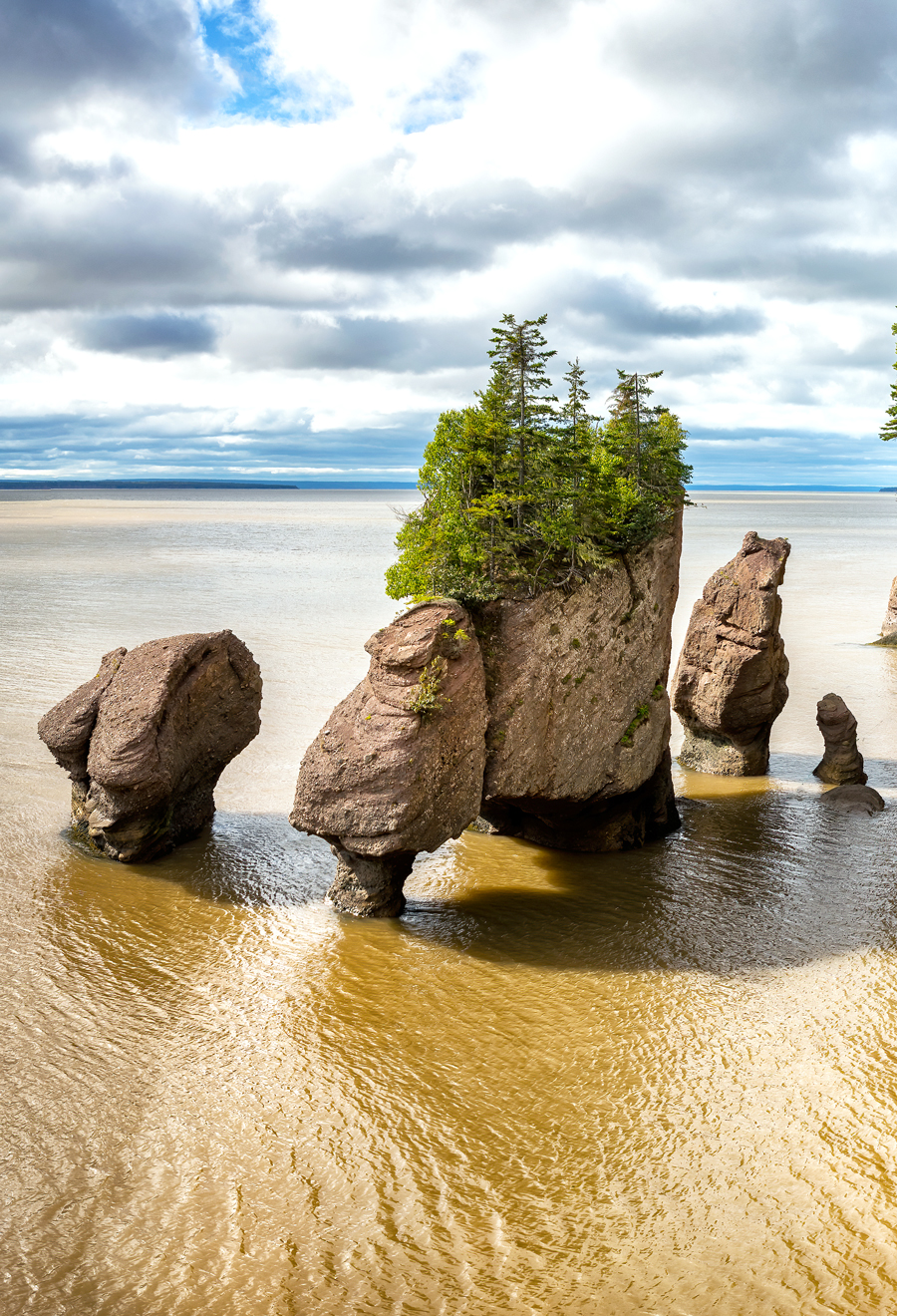Bays form some of the planet’s dreamiest natural landscapes. These brilliant-blue coastal bodies of water are often surrounded by dramatic cliffs, towering rock formations, and postcard-worthy beaches — making them a surreal sight to witness up close. From the bay that sees the world’s highest tides to a bay named one of the Seven Natural Wonders of the World, check out five of the world’s most beautiful bays.
Halong Bay – Vietnam
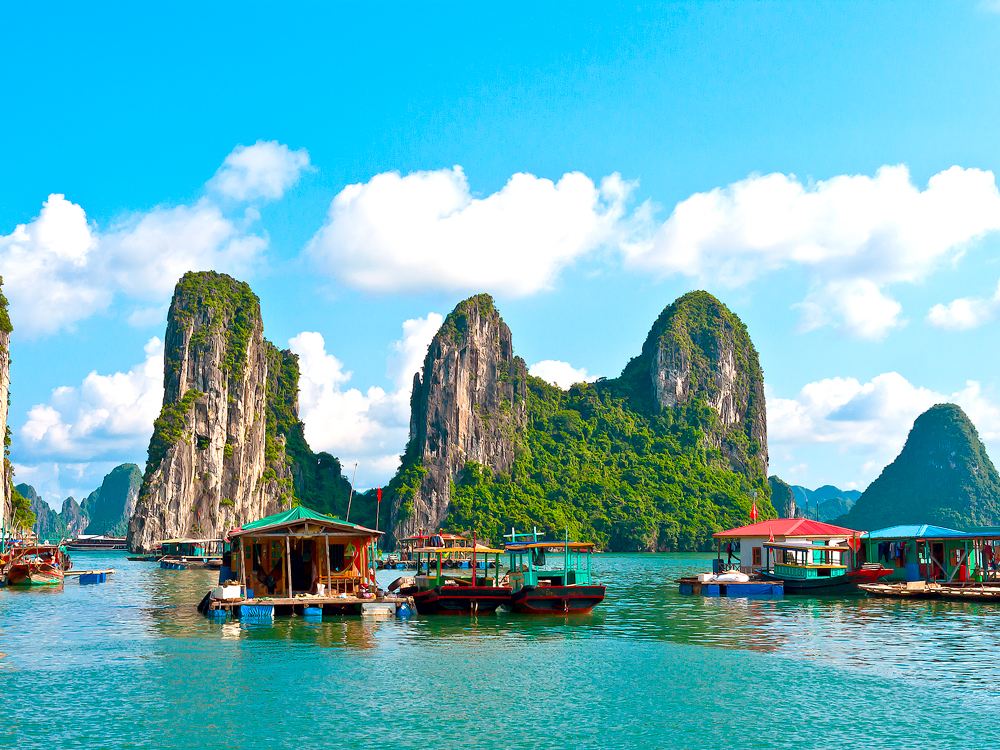
Around 1,600 jagged, rainforest-covered limestone pillars erupt from the emerald waters of Hạ Long Bay — creating one of Vietnam’s most surreal landscapes. The full name of this UNESCO World Heritage Site, Vịnh Hạ Long, translates to “Where the Dragon Descends to the Sea,” an evocative way to describe this 600-square-mile bay in the South China Sea’s Gulf of Tonkin that has become one of the country’s must-see tourist destinations.
Once an ideal hideout for pirates, the karst monoliths were made famous in the 1997 James Bond film Tomorrow Never Dies. Like Scotland’s Loch Ness, Hạ Long has its own mythical monster, a camera-shy sea serpent known as the Tarasque, but that doesn’t stop the hordes of visitors flocking to see the bay’s caves and beaches, peruse the area’s pearl farms, cruise on classic sailing vessels (junks) or explore under their own steam via kayak. About a three-hour drive from Hanoi, Hạ Long has a huge selection of lodging options, from basic guesthouses to five-star resorts. Many visitors also choose to stay overnight on the bay.
Horseshoe Bay – Bermuda
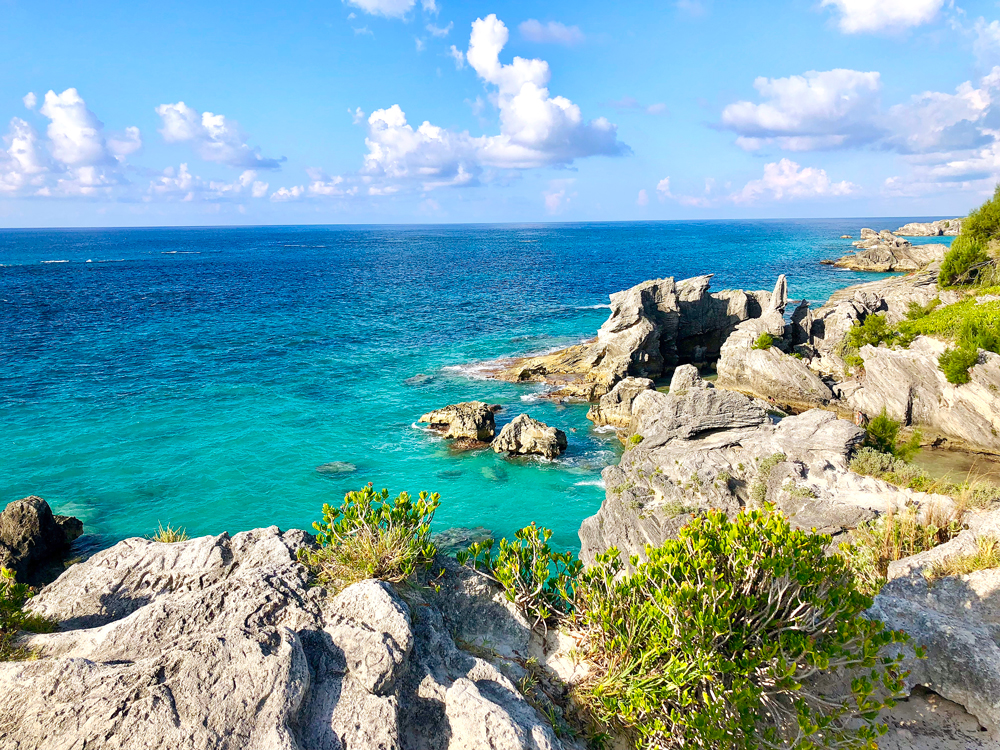
Bermuda’s Horseshoe Bay is actually more crescent than U-shaped, but either way, it’s one of the island’s must-visits. Located in Southampton Parish, the expansive beach is famous for its pink-hued sand, the result of crushed coral and seashells. The pink of the shoreline contrasts crystal-clear turquoise water that, as an added bonus, is bathtub-warm and mostly calm in the high season (May to September).
But if you’re looking to avoid crowds, take a romantic off-season stroll, check it out during a kite-flying festival every year on Good Friday, or time your visit for a weekday. Of course, there’s also the option of just embracing the crowds — thanks to its popularity, the beach offers a bevy of amenities. And we’re not talking just about snorkeling gear (look for angelfish and parrot fish among the reefs) — there are also chairs and towels, an array of casual snack bars and restaurants, a protected cove that’s great for kids, lifeguards and changing rooms, and striking limestone rock formations that more adventurous visitors love to climb over. Horseshoe Bay is easy and cheap to get to by bus — but we recommend getting there like a true Bermudan and renting a scooter.
Bay of Fundy – Canada
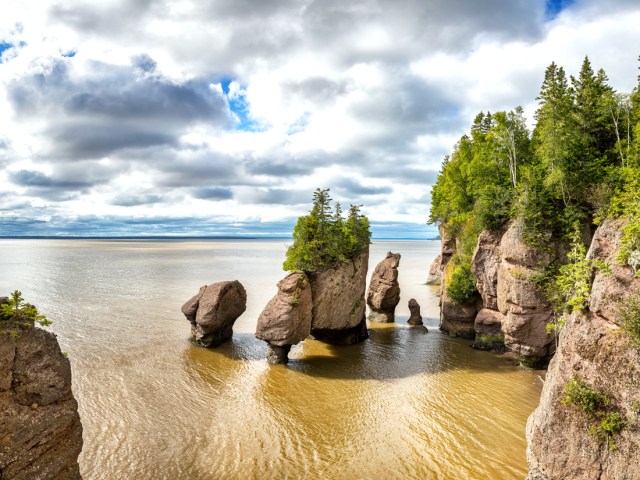
Twice daily, more than 175 billion tons of Atlantic seawater cascade in and out with the Bay of Fundy’s tides — an amount greater than the combined flow of all freshwater rivers on Earth. Approximately 190 million years ago, tectonic plates began to sever the Pangea supercontinent, creating the rift valley that the Bay of Fundy occupies between the Canadian provinces of New Brunswick and Nova Scotia. Erosion from the bay’s record-high tides has uncovered the world’s most complete chronicle of the 300 million-year-old Carboniferous Period at Joggins Fossil Cliffs — a UNESCO World Heritage Site — plus dinosaur fossils at the Cliffs of Fundy UNESCO Global Geopark.
More than 1 million nature enthusiasts arrive each year to witness these incredible natural wonders. At high tide, waves peak at 70 feet tall, but when the coastline calms, sea kayakers and their guides are able to paddle through the dynamic scenery. From May to October, visitors on foot can approach the Hopewell Rocks or “Flower Pot Rocks,” sandstone sea stacks topped with plant life. These months correspond with boat tours of the Fundy Aquarium Ecozone: Lucky spectators may spot four species of whales — including the planet’s second-largest animal, the finback whale — as well as dolphins and porpoises.
Wineglass Bay – Australia
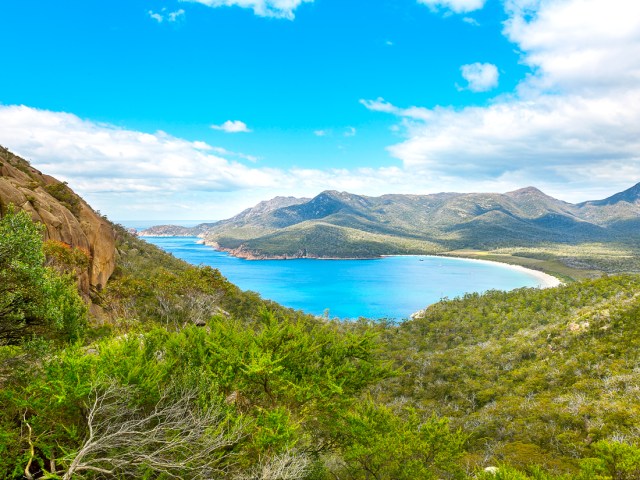
Part of the Freycinet Peninsula on the east coast of Tasmania, Wineglass Bay is often cited as one of the world’s best beaches, as well as the state’s most photographed vista. And given the mountain-backed swirl of transparent turquoise you’ll find here, both superlatives make perfect sense. The origins of the name itself, though, are a little less straightforward — it comes not from the crescent-shaped shoreline that might resemble a wineglass when viewed from above, but from a darker history. In the 1800s, whalers would set out from these shores to harpoon passing prey, and as the unfortunate catch was towed back in, the bay would turn blood-red (or wine-red, as the imaginative onlooker might see).
Fortunately, by the mid-19th century, shore-based whaling had ceased in the area, and in 1916, Freycinet became a 65-square-mile national park. The combined result is that these waters are now protected and pristine — to the elation of visiting divers, kayakers, eco-cruisers, hikers, and nature photographers from around the world who come to visit the photogenic bay.
Guanabara Bay – Brazil
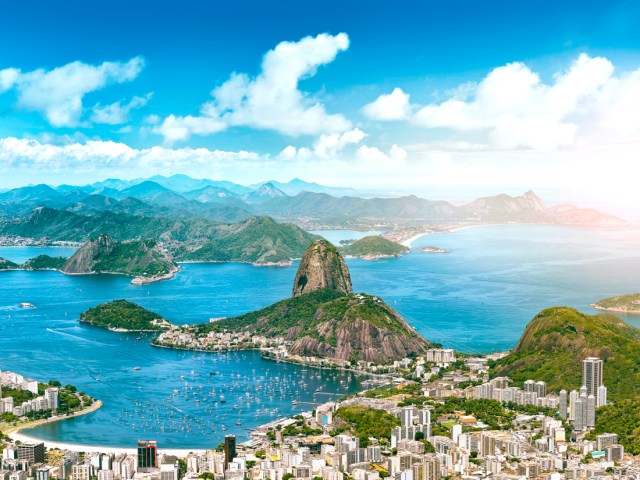
One of the Seven Natural Wonders of the World, Guanabara Bay is the world’s largest bay by volume of water. The bay’s resemblance to a river inspired the name of the city along its western shores. In January 1502, Portuguese explorers mistook the entrance to the bay as a mouth to a river and named their settlement Rio de Janeiro, which translates to “River of January.” Guanabara Bay features bright, blue waters that are surrounded by the iconic Sugar Loaf Mountain, which juts from the water at the mouth of the bay, and the statue of Christ the Redeemer. Sitting atop 2,300-foot-tall Mount Corcovado in Rio de Janeiro, Christ the Redeemer stands as a symbol of strength with his arms wide open over Guanabara Bay.
More from our network
Daily Passport is part of Inbox Studio, which publishes content that uplifts, informs, and inspires.






